
The baobab-dotted moonscape


In the heart of Botswana lies a land so strange, so otherworldly, that to visit is like walking across the surface of the moon. The air shimmers, and white clay crackles underfoot, baked hard by an unforgiving sun. From horizon to horizon, emptiness stretches for endless miles, broken only by the occasional stand of palm trees that stand stark against the sky. Botswana’s salt pans are among the largest on earth. For those who make the journey for this unique African safari, the reward is a sense of absolute isolation and remoteness against the backdrop of some of Africa’s most hauntingly beautiful landscapes.
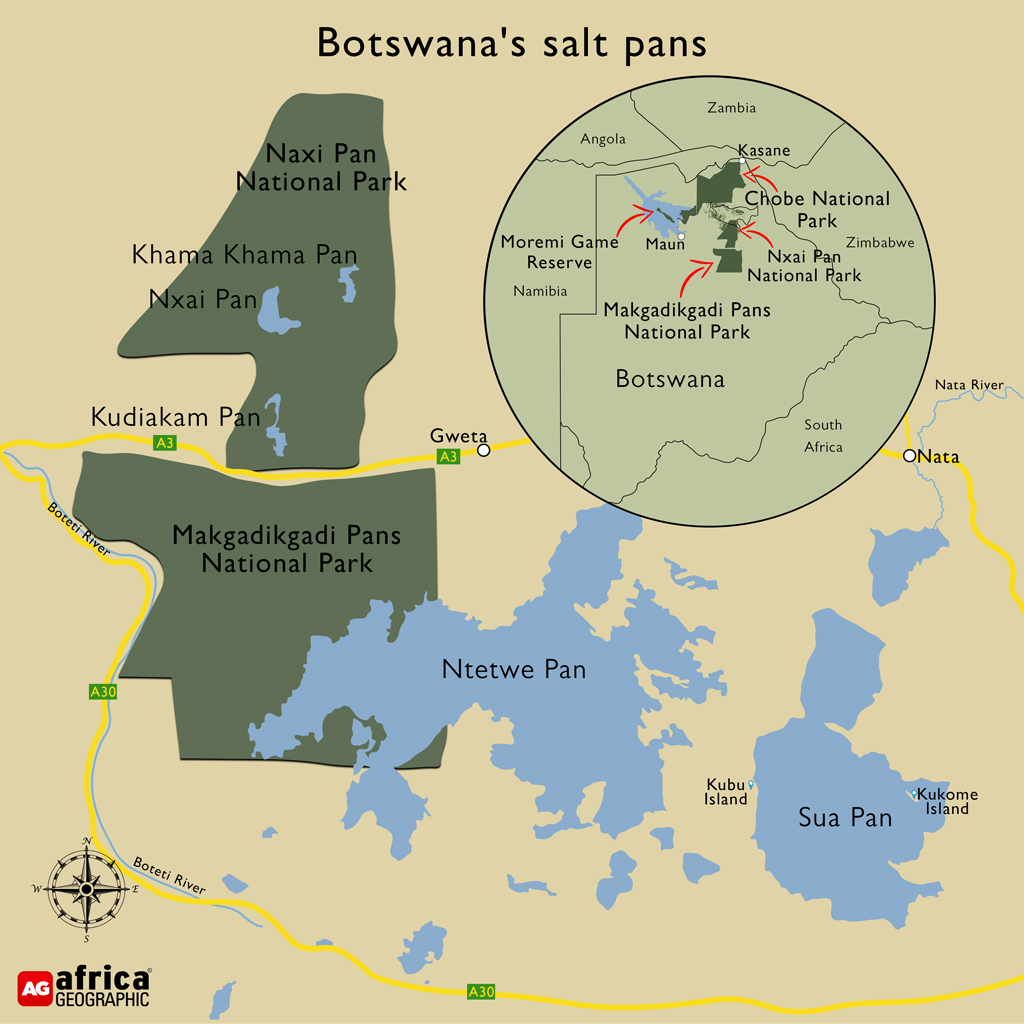
Salt of the earth
Once upon a time, the mighty Okavango River poured south from Angola and emptied into a vast paleolake larger than Switzerland – Lake Makgadikgadi. Then seismic activity shook southern Africa, changing the shape of the earth’s surface and blocking the river’s flow. Lake Makgadikgadi gradually dried up, leaving behind a dry and apparently barren wasteland. Though often referred to as just Makgadikgadi Pan, the region comprises a series of salt pans stretching for hundreds of miles in every direction, interspersed by sandy desert and covering some 16,058 km2 (1.6 million hectares) of the Kalahari Basin. The largest are Ntwetwe Pan, Sua/Sowa Pan and Nxai Pan.
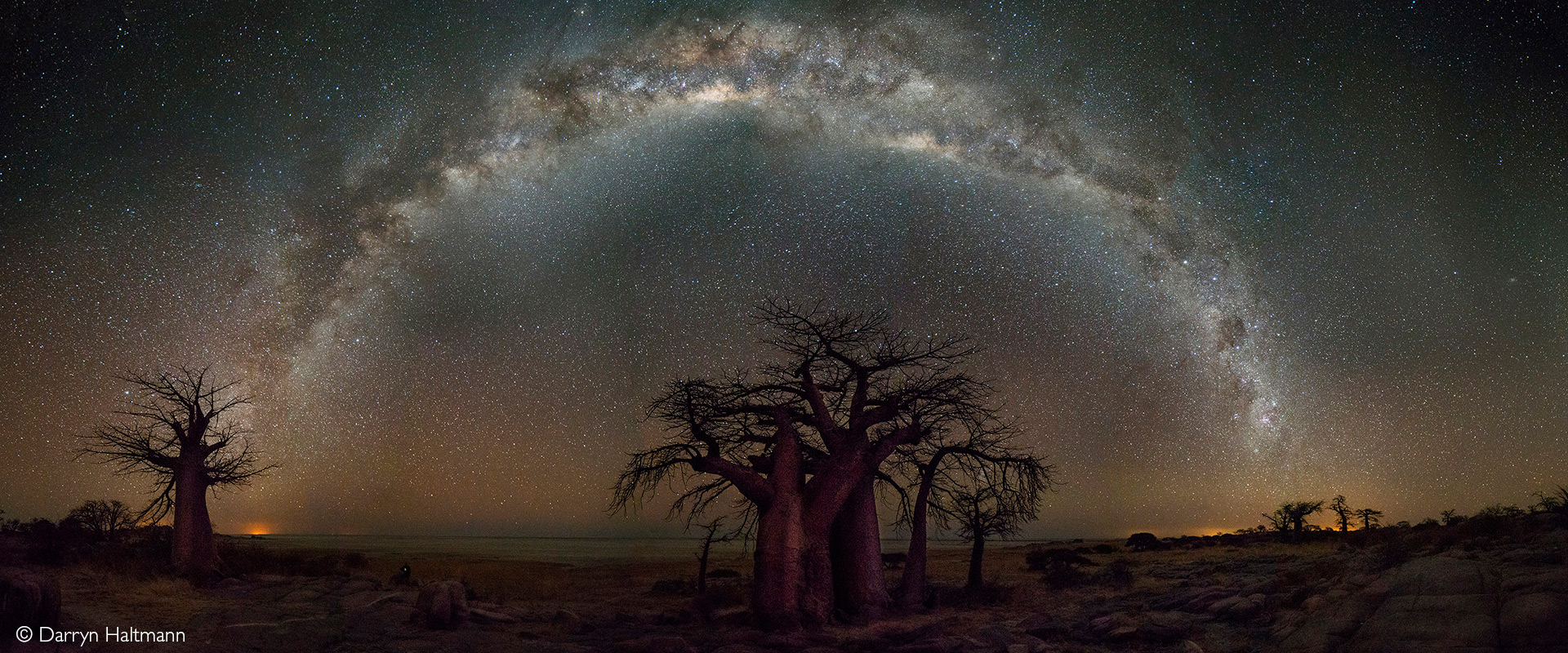
Rising from the flats of the pan-like fossilised Leviathans are iconic igneous rock islands dotted with the squat forms of ancient baobabs. The most famous of these are Kubu and Kukome islands in Sua Pan. Kubu Island is so important to Botswanan heritage that it is one of the country’s national monuments. Hidden here (and scattered throughout the pans system) lies evidence of our human history in the form of stone tools, walls and other relics. Some of these even pre-date the era of Homo sapiens, and several scientists have argued that Makgadikgadi should be considered the birthplace of humankind.
Though the landscape is rugged, it is anything but desolate: the rims of the pans are fringed with palm fronds, frayed umbrella thorn trees and scrubby savanna, where desert-adapted wildlife eeks out an existence in the extremes. And every year, when the first storm clouds darken the skies, the parched dustbowl transforms into a lush paradise, flushed with a soft blanket of green. Drawn to this profusion of mineral-rich grasses, zebras arrive in their thousands, following the ancient pathways of Africa’s longest terrestrial migration. They are accompanied by herds of wildebeest, oryx and other antelopes, while resident and nomadic predators alike stalk hot on their heels. Fed by the nearby ephemeral Nata River, the pans fill with water, attracting flocks of water birds, including ducks, geese, pelicans, and flamingos.
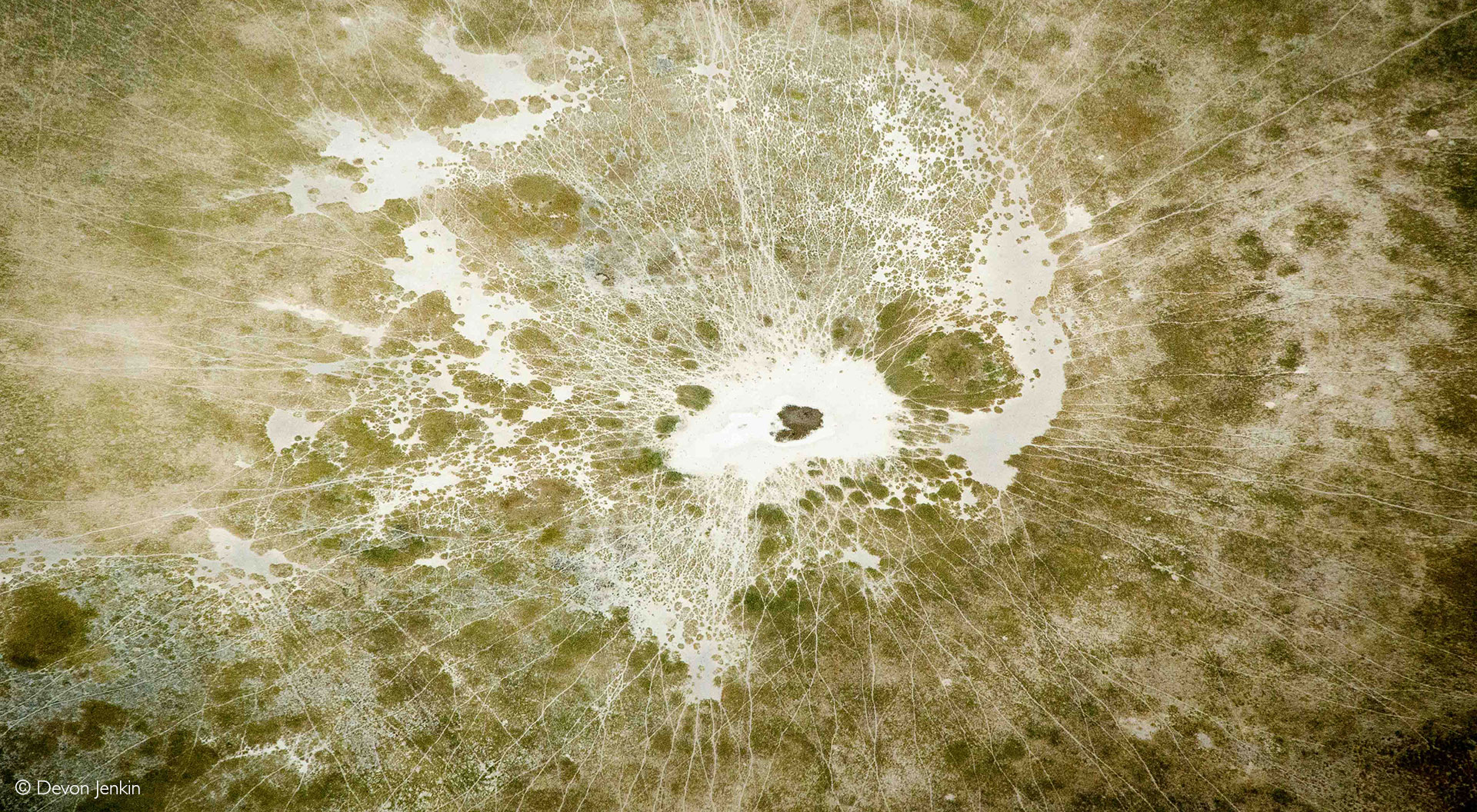

Of twin parks and salt pans
Much of this vital habitat is protected by a twin pair of national parks: the 3,900 km2 (390,000 hectares) Makgadikgadi Pans National Park and the 2,590 km2 (259,000 hectares) Nxai Pan National Park to its north.
Makgadikgadi Pans National Park covers part of Ntwetwe Pan, with the remainder of the park consisting of grasslands and a scattering of smaller salt pans. The Boteti River runs along its western boundary, acting as the only permanent water source for miles around. Even at the height of the dry season, the Boteti is an oasis for thirsty wildlife, including throngs of elephant, giraffe, zebra and wildebeest.
Nxai Pan National Park is home to seven impressive baobabs made famous in the 19th-century painting by British artist Thomas Baines. This tranquil oasis had provided him shelter as he accompanied pioneer James Chapman on a journey through the Kalahari towards Victoria Falls. The “Baines’ Baobabs” still stand, almost unchanged over 160 years later.
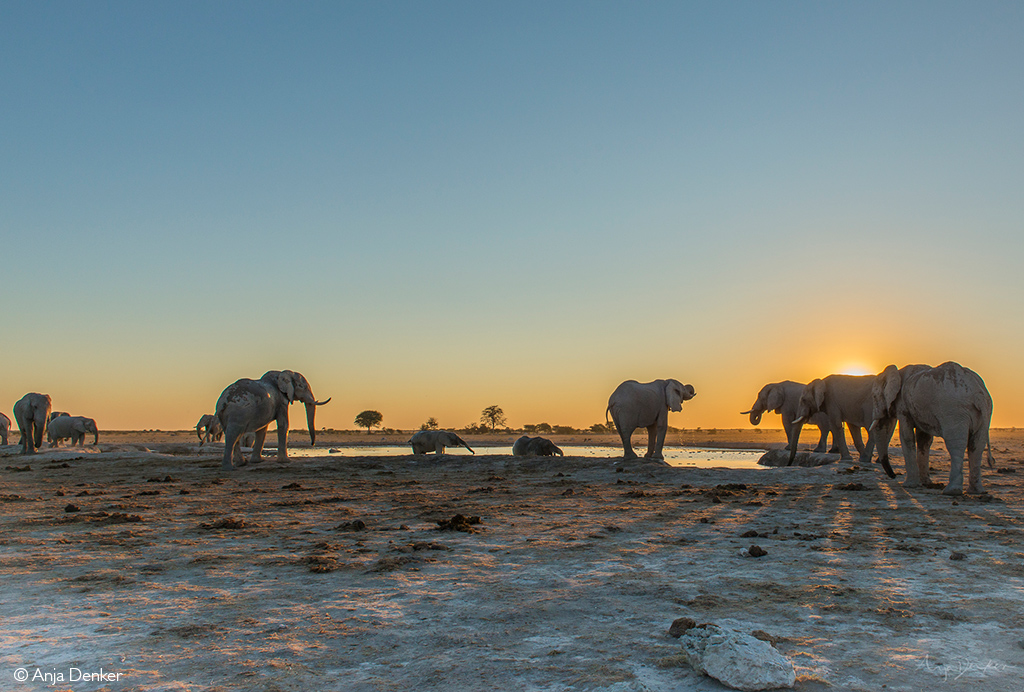
Botswana’s great migrations
Unbeknownst to most people, Botswana is home to two impressive migrations, both of which centre around the Makgadikgadi-Nxai Pan ecosystem. These migrations offer astounding (often less crowded) wildlife sightings and testify to the genetically programmed instinct to migrate. Across the continent, fences have halted most of Africa’s large mammal migrations across the continent. But when veterinary fences in Botswana were moved in the mid-2000s, researchers and conservationists were astounded to see some of the zebra herds return to two ancient migratory patterns.
The first of these is the Chobe-Nxai Pan zebra migration. At a round trip of over 1,000km, scientists have only recently recognised it as the longest terrestrial migration in Africa. The herds spend the harshest of the dry months around the Chobe River flood plains from June until early November before over 20,000 zebras begin the journey southwards. These herds disperse throughout the Nxai Pan National Park and remain there for about three months, from December to February, gathering their strength before beginning the return journey north.
The Okavango-Makgadikgadi migratory route is a shorter and smaller migration that involves around 15,000 zebras that complete a 500km roundtrip each year. These animals spend the dry season around the Okavango Delta floodwaters before moving to the Makgadikgadi Pans area when the rains fall.


Survivors of the salt pans
Even once the zebras have departed from the salt pans, the Makgadikgadi and Nxai Pans regions still thrum with life. Herds of springbok, impala, giraffe oryx, eland and hartebeest are resident all year round. Leopards lurk in the denser forests and along the riverbank, while lions of the black-maned Kalahari stock spend their days in the shade and cover enormous distances at night. Cheetahs and wild dogs (painted wolves) frequent the open grasslands, and hyenas of both the brown and spotted varieties abound. Of the smaller predators, black-backed jackal are ubiquitous, as are the adorable families of bat-eared foxes. Aardwolves and aardvarks emerge at dusk, and some lucky visitors are even treated to the sight of the elusive striped polecat.
One of the region’s major attractions is the groups of habituated meerkats. These charming little characters have learned to treat visitors as part of their everyday environment, sometimes even climbing onto delighted guests to gain a higher vantage point.
Makgadikgadi has long held a reputation as a sterling birding destination – a concept that might seem strange in light of its harsh desert aspect. Yet during those rare years when the rains are good, and even the largest pans fill to the brim, the region turns into a wetland paradise, including the associated birdlife. Flocks of greater and lesser flamingos arrive in droves, decorating the pans in a delicate shade of pink, accompanied by trawling great white and pink-backed pelicans, ducks and geese. The community-managed Nata Bird Sanctuary on the northern edge of Sua Pan protects one of the world’s largest breeding sites of lesser and greater flamingos.
Wattled cranes, red-knobbed coots, pied avocets, African spoonbills, grey-headed gulls, white-winged terns and a variety of storks, ibises, and herons are all additional waterbird highlights. Away from the water, long-legged secretary birds stalk through the grasslands, and ostriches display their motley feathers.


Explore & stay at the salt pans
Want to go on a safari to Botswana’s salt pans? To find lodges in or near Makgadikgadi, search for our ready-made packages and get in touch with our travel team, scroll down to after this story.
Botswana’s salt pans are a rare safari gem in that they are equally spectacular as a wet or dry season destination. While the rainfall of the summer months (between late November to early March) does make the pans themselves largely inaccessible, the experience of desert-turned-sanctuary is hard to beat. Many of the herbivores give birth around this time of year, and migrant animals arrive by hoof or wing in their thousands. It is as though the very land itself breathes a sigh of relief, refreshed and sufficiently revived to survive the long dry months ahead.
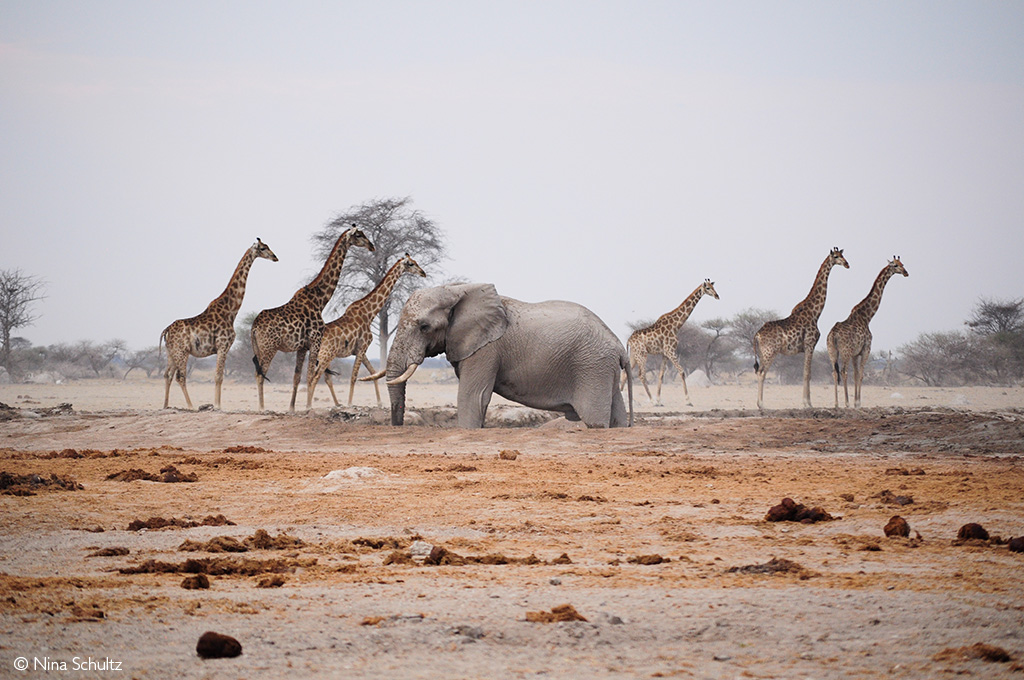
By contrast, the dry season from March to October offers the best opportunity to take advantage of the escapism for which the salt pans are so famous. The scenery is at its most evocative at this time of year, and, with the ground once again flat and hard, visitors can set out on foot, horseback, 4×4 or quadbike and head out onto the vast salt flats. Take a few steps in any direction and embrace a sense of isolation and space so profound that it seems to warp time itself. Even better are nights spent under the diamond-studded skies, enjoying some of the best star-gazing on the continent.
Budget campsites are available, and a self-drive adventure through the salt pans region is an excellent option for the well-prepared traveller. However, Makgadikgadi is famous for its more luxurious lodge options, many of which are styled as a romantic homage to a forgotten safari era. A stay at one of these lodges means that you have an expert guide at your disposal, along with many other salt pan-exclusive activities to add to the safari wish list.
 Find out more about visiting the Salt Pans , and Botswana, for your next African safari. We have ready-made safaris to choose from, or ask us to build one just for you.
Find out more about visiting the Salt Pans , and Botswana, for your next African safari. We have ready-made safaris to choose from, or ask us to build one just for you.
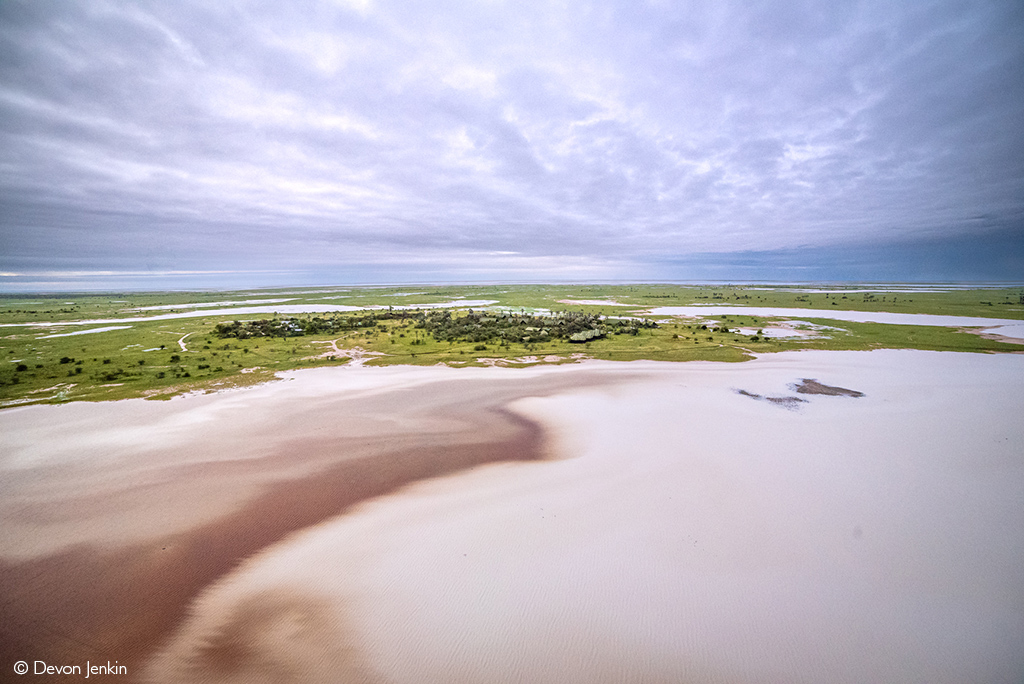
To comment on this story: Login (or sign up) to our app here - it's a troll-free safe place 🙂.![]()




